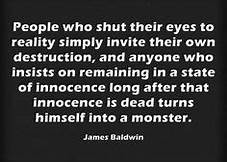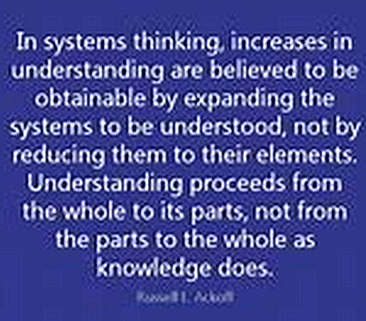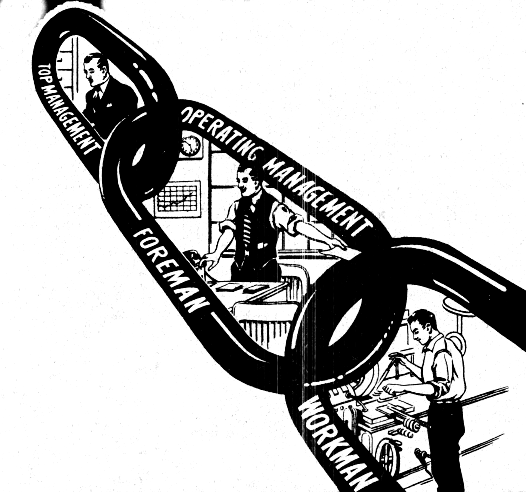Making the pilgrimage to Plan B
Conformity to the rules and fashions of Plan A society has ceased to be a virtue. Status quo no longer assures survival of the species, but its downfall. If you are closed-minded to learning about reality, your happiness level is stuck where it is and heading South with the flock. If you are into learning, to the virtue of resilience, the duty of personal growth looms large. Herein is full disclosure of the schedule of do’s and don’ts of the adventure. There is no need for you to be surprised by the social behavior reality that you will encounter.
A decade of implementation successes with the generic Plan B paradigm was validation enough for us to ask the big question. Why didn’t this fix for dysfunctional social systems get invented millennia ago by our ancestors? Armed with glorious hindsight and the answer book, Plan B, it became clear that the fix itself is common-sense obvious. By silence-breaking, it is easy to demonstrate that the necessary and sufficient facts and evidence are everywhere in plain sight. Call for a demonstration and see for yourself.
Complaints about organizational dysfunction (OD) were recorded on cuneiform tablets and interior pyramid walls before 3K BCE. Five thousand years later, OD is still the global norm. You can get a wide-spectrum history lesson from our predecessors.
We personalized the unspoken question to ourselves: What were the biggest gaffes in understanding and assumptions we made, along with our mentors and oracles, our trailblazers, before bringing Plan B into the world in 2013? For your convenience, the answer is presented in checklist form. Omission of any item on the list is fatal to success.
The listing of our blunders and shortcomings of knowledge made over five decades of striving towards Plan B, a goal we had no evidence was even possible, is presented in two categories.
- The fallacious assumptions we used for navigation that we had to abandon. This ensemble of false assumptions, entangled, is the mechanism of action that forms the system of organizational dysfunction (OD).
- The necessary and sufficient knowledge and competencies we had to acquire and develop to attain the Plan B goal, enduring happiness and fulfillment. This ensemble of on-target functionalities, entangled, forms the flourishing system.
The OD system runs on business-as-usual, the global norm of social behavior, Plan A. No thinking necessary, it’s on intuition automatic, it is the universal default of ill-informed class-conscious human society. As a parasitical system, unable to deal with disturbances to status quo, its primary need is to obtain an external source of unearned resources to continue its dysfunctional operations.
The flourishing system is Plan B, as stable as Plan A, that produces surplus indefinitely. Its price is continuous cognitive investments and applied intelligence. It has no “sell by” date.
Ours is a world in which justice is accidental, and innocence no protection, Euripides 450 BCE
Invariant human nature on parade, a summary
The current war between invader Plan A and defender Plan B is an exciting lesson about the prime mover of Plan A, encoded in our Stone Age genome. Plan A world cannot apply simple arithmetic and logic to apprehend what is playing out in this lop-sided Goliath/David conflict where David always wins.
You know the aggressor nation is three times as big, has a larger army with an extensive and deep arsenal, being led by a supreme commander determined and committed to winning at any cost. You also know that instead of a three-day victory for Plan A, as planned, Plan B nation is winning the war, already on counter offense.
The Plan A nation is using conventional organizational practice featuring a top-down chain of command in its hierarchically-configured military. Like all mature Plan A nations, it is fully 3-D corrupt. The front lines of its military can act only on the explicit orders sent down by its generals. In contrast, the Plan B nation is using Plan B bottom-up practice where the soldiers engaging the enemy are trained, equipped, and empowered to battle as they see fit. The more lethal the equipped foot soldier, the more the power of war-waging drains from the command center to the trained, autonomous front-line teams.
The Plan A world is not able to gather the ground-truth facts, do the math, and, using the process of elimination, conclude that the distinguishing difference in this war is organizational ideology, not military hardware. As stated above, you will notice that all news media, on all sides, is cemented to the official position that Plan A cannot lose, it’s only a matter of time until it prevails, and that Plan B nation should capitulate. This irrational bias is still promulgated even when the global population already knows who’s going to win the war by counting incurred losses.
We predict that when the war is over, under Plan B nation’s terms, Plan A world and its media will learn nothing from the experience. It will contrive the usual excuses for Plan A’s failure and never acknowledge the role of social ideology. Avoiding operational realities to protect bad political policy is already hastening traditional media’s extinction.
Checklist for happiness-seekers
False assumptions of social system Plan A for navigation
Stuff that should not be in your wheelhouse:
- Top down, chain of command, class-based
- Authority-based social status (opinion)
- Autocracy-stated value system, groupthink
- Authority and social power are equivalent
- Warfield’s dictum
- Simple cause or simple effect, in the spotlight of your mind
- GIGO
- Compulsory OTA, infallibility, rules conformance
- Somebody will get it to work
- Reality denial
- Role occupant personality
- Fear of punishment, pulling rank
- Zero sum competition

Requisites for navigation to system Plan B
Stuff that must be in your wheelhouse:
- Law of optimality: start right
- Keystone level awareness
- Personalization
- System-think focus, fractal causes, cascading effects
- Authentic responsibility for collective attainment, reality centered
- AQI, ground truth, reality-based, POSIWID
- Foreseeability and resilience
- Performance-based social status (evidence)
- Natural Law cognizance, avoiding defiance attempts
- 2nd Law
- Entropy extraction
- Conservation laws
- System dynamics laws
- Control theory/Ashby
- Ecological system laws
- 2½ rule
- Nash
- Turing
- Law of optimality
- 2nd Law
You can continue to engage fallacious assumptions. You can fail to execute effective practices. Either way you end up far short of the attainable benefit package of Plan B for yourself and your social systems.

Elaboration
Whatever your checklist score, you can personally benefit immediately by resetting your navigational assumptions on brute reality. With the structure of Plan B as reference, you can witness your contemporaries nervously putting their efforts into strategies and practices proven, without fail, to fail. Just understanding the engine of social dysfunction greatly relieves emotional stress and the feeling of helplessness.
The checklist is as generic as human nature itself, expressed through our invariant genome. You can use it to evaluate others and avoid the perils of goal-seeking with impotent associates. Others can use it on you, as well.
It is essential to dump the false assumptions as your milestone one. Doing so is a psychological activity and, with no inertia to overcome, it can be done quickly. In contrast, gaining the positive necessaries is a cognitively demanding activity that, even with hyperlearning conditions, takes whatever time it takes. The important measure is continuous improvement, as the 2nd Law applies to happiness as it does to everything else.
As you will experience, it is much easier on the brain to go with the herd than it is to navigate on reality, real time. After you have been betrayed, you don’t have to know the details to distrust someone.
You are free to choose how you will react to facts and evidence. While the checklist tool is incontrovertible, you are free to ignore it. What you cannot escape are the consequences of your choice. No one ever did. Personalization is essential for trust-building and maintenance, details matter, and the process takes time.
The secondhandedness of the learned world is the secret to its monopoly on ineffectiveness.
Each item on the checklist derives from at least three sources:
- Our significant failure experience
- Scrutable connectivity to mathematical physics, essential transparency of method
- Demonstrability on your organization. If it’s not demonstrable, it is not included on the Plan B checklist
The checklist of prerequisites to prevail over the unhappiness that attends all organizational dysfunction is provided for your benefit. Apply the checklist to your situation and experience. When you can check the items on the list, you are positioned to arrive at Plan B.
Any unchecked items means that the attempts you make to reach social happiness cannot succeed. We know this first hand, duh, because our many protracted attempts to succeed with these handicaps in place failed miserably.
The checklist settles all questions about your goal-attaining prospects. Because the happiness business is an interconnected ecosystem affair, ace the checklist and your risk of failure is eliminated. For all other possibilities, the risk of success is eliminated. Simple.
If you are operating on false assumptions and garbage information in a corrupt environment, is happiness really attainable? Expressed another way, if you are not operating in concert with natural law and system think and keyed on the keystone role, on what basis do you expect to attain happiness?
If you elect to forego the effort it takes to attain happiness, as defined by Plan B, the rest of the m-i-t-m website has nothing for you. If facts and evidence don’t motivate, whatever does ring your bell will not take you to psychological health. It is inextricable from full ownership of your happiness in life.

Some General Remarks about individual checklist items
Top Down
The paramount false assumption, the one that murdered us daily for decades, is the top down, chain of command power and control delusion. Born free, it’s ingrained into human skulls by social conditioning before first grade. It’s theme song is kingship, leadership, omniscience, and omnipotence. Our persistence with the top down fallacy failed us as it had failed everyone for millennia, in spite of its genocidal record. Notice that if you switch your assumption of top down leadership effectiveness from truth to counterproductive, most of your social system experiences will become rational.
Socializing this fallacious assumption into the masses has enabled the ruling class to destroy its own civilizations, one after another. This effect was already in the cause. If you think attaining the goal requires “management buy-in,” you’re defeated before you begin. It’s a convenient intellectual alibi for your debacle.

The Head Shed value system
The second greatest cause of our failures was ignorance of the head-shed value system-in-use. Organizational behavior is subtle and nuanced. Behavioral science has measured that the top rungs of the tall hierarchy are plagued with the imposter syndrome. Like the naked emperor, they live in fear of being found out. Through POSIWID, you soon learn that management is impotent as navigator to prosperity. What they declare as their purpose is not consistent with what they do. The value system of the ruling class is self-destructive. Just watch world events unfold and apply POSIWID.
The value system by which the ruling class makes choices regarding what they do is an impasse to forming a flourishing organization, an impasse that remains concealed until you offer what they say they seek for their collective and society in general. It’s another process-of-elimination (POE) affair. When Plan B arrived on the scene, the true value system of the head shed echelons became POSIWID-evident all at once. Talk about a sobering experience!
When you go look for it, there is evidence of the operational Head-Shed value system everywhere. The pursuit of M&A, in spite of an atrocious track record, ruining the lives of millions, is an example of deliberately throwing their organizational membership under the bus as a premeditated, overt act. What they don’t value is deceptively subtle. Most of the values they espouse on stage, they deliberately ignore in operations. This set of negative values includes many items which are directly connected to the bottom line of the financial statement:
- Productivity – pure profit
- Turnover – horribly expensive
- Employee health husbandry
- Physical, absenteeism
- Mental, Ca’canny sabotage
- Safety record – doubly expensive
- Resilience to disturbances – instability
- Quality of products and services
- Community reputation
- Stakeholder satisfaction
- Environmental health husbandry
- Regulatory compliance
- Litigation
- Trustworthiness
- Positive reciprocity
- Competitive advantage
This list of values-in-use which drives a negative impact on profits and survival is prominently displayed when the OD system fix offer, Plan B, is rejected out of hand. Any doubts about this list can be settled by making the offer yourself to any executive. In ligation, the law calls this behavior deliberate ignorance.
The universal reaction of the head shed to the Plan B offer, catatonia, is easy to demonstrate. Their subconscious mind is unable to fabricate a plausible excuse so it can’t complete its centisecond choice-making cycle. The people in the head shed are clueless as to what is going on in their own heads.

Undercounting causes and effects and network entanglement
The third most damaging factor in our happiness-seeking was to expect that fixing particular consequences (reductionism) would bring happiness-seekers to enlightenment. Attempting to defy the Gödel maxim, failure to discover and map the tangled network of participating causes in driving the institution dysfunctional, destroyed our prospects for success. There we were, professional systems engineers, trapped by social conditioning and standard corporate culture, knowing better, defying the very essence of system think and suffering the consequences. Embarrassing? Yes. Regrettable? You bet.
The use of the system-think concepts and practices of sociotechnology is essential to attain happiness. There’s nothing optional about it. Remember, you can only certify the cascade of consequences from organizational dysfunction (OD) after you fix the system that produces the cascade.
At this point it is helpful to understand that the checklist of requisites is what needs to be brought to the party. Yes, it’s too much for a single cranium. While you are not expected to learn all this stuff before proceeding, especially control theory, it is necessary for you to persevere until these items are competently satisfied.
The concept of “feedback,” so simple and natural in certain elementary cases, becomes artificial and of little use when the interconnexions between the parts become more complex. When there are only two parts joined so that each affects the other, the properties of the feedback give important and useful information about the properties of the whole. But when the parts rise to even as few as four, if every one affects the other three, then twenty circuits can be traced through them; and knowing the properties of all the twenty circuits does not give complete information about the system. Such complex systems cannot be treated as an interlaced set of more or less independent feedback circuits, but only as a whole. For understanding the general principles of dynamic systems, therefore, the concept of feedback is inadequate in itself. What is important is that complex systems, richly cross-connected internally, have complex behaviors, and that these behaviors can be goal-seeking in complex patterns. William Ross Ashby
Outcome responsibility
All ecosystems have a keystone species that is essentially responsible for the health and survival of the ecosystem, animal or botanical. Human social ecosystems are no exceptions to the ecosystem laws. There is a keystone layer in every social hierarchy and, because of the scope of deliverables inherent in the keystone role, it is solely responsible for building and maintaining social system prosperity.
Those at hierarchical levels above the 2½ rule have no positive control over the workforce and the level below the keystone must fall in with keystone assignments regardless of the situation.
Outcome responsibility cannot be assigned or delegated. It must be freely taken by the keystone in fair exchange for the autonomy to deliver on his pledge. Declaring that everyone is responsible for project success is heralding that no one is responsible for goal attainment. This fact is instinctively known, but on the undiscussable list. When an executive claims he is responsible for the company profits, everyone knows he is not an authentic producer.
Congressional hearings are amphitheaters for CEOs to explain away their responsibility for the atrocities committed by their organization. All defenses are the same, tied to the 2½ rule. This standard alibi unfailingly succeeds.
It’s easy to derive the outcome responsibility matter. The only authentic, legitimate echelon responsible for successful outcomes is the hierarchical role having the direct capability and power to deliver and advance material success. Only keystone level people have the combination of front-line social power, AQI, and competency to be authentically responsible for workforce happiness. They hold the keys to effective performance.
Those at higher levels, by role, values, and the 2½ rule, are too far removed from the front lines reality to make positive contributions, even if they wanted to. Those at the lower level, the workers in the trenches, are obliged by role to fall in with the keystone regardless of the situation. Whoever sets the rules and makes the assignments owns the consequences of compliance.
Outcome responsibility can neither be assigned nor delegated. It must be freely taken by the keystone, the only authentic volunteer in the organization. All other volunteers, if any, are imposters. If management declares itself or everyone is responsible, as stated above, everyone in the entire project knows no one is responsible. The associated clue is the sudden appearance of CYA files. We had several personal experiences with this.
By taking responsibility, the keystone must be accorded the requisite autonomy and his inalienable rights to deliver on his pledge. Otherwise, all bets are off.

GIGO
For the garbage in = garbage out maxim, the Bad Burrito Rule, the Charles Babbage declaration says it all. If you don’t find GIGO to be plain common sense, your pilgrimage to happiness is doomed.

Infallibility
Anyone who knows anything about the 2nd Law, knows that the state of infallibility is, at best, fleeting. Rule-based behavior, predicated on eternal infallibility, is dysfunctional and corrupt in the extreme. Whoever sets the rules owns the consequences of blind obedience, a frequent Monty Python theme.
Zero Sum
In organizational operations, less than 1% of the various zero-sum competitions in play are valid. They are contrived, not legitimate. The “pie” being contested is not a fixed quantity. The classic zero-sum competition between labor and management, for example, assumes that productivity is fixed when it is, in fact, a variable under control by the workforce.
Even though it loses, labor enjoys the intense social tussle as much as management. History has shown it doesn’t take long for the labor union head shed to collude with corporate management against the union members.
Personality profile
The notion that “leadership” is connected to personal characteristics is likely encoded in our genome. The Big Kahuna delusion has been documented for centuries. It has no traction in the flourishing social system. The 2½ rule, a natural law, indifferent to charisma and deaf to persuasion, features social status by performance (reality), not authority by vote (opinion).
When you have a high-performing individual in your squad, his “personality” is warmly accepted as-is. His quirks may be kidded by his fellow work associates as validation of his acquired social power, but the two-way kidding is how the high performer knows his positive impact is appreciated.
Fear
It is self-confidence in your readiness to deal with the unknowable, arriving future that matters. If you don’t know cause and effect in your ecological niche, sooner or later a disturbance will arrive that turns off the lights. Defaulting to fear has no place in the flourishing organization. Proactive preparation for uncertainty and entropy extraction, resiliency, shows that no foreseeable disturbance is going to be bigger than the prepared, collaborating organization.
Keystone focus
The keystone species of the hierarchical ecosystem is the gatekeeper of all positive change to the revenue stream. All echelons above the keystone are condemned by rampant GIGO to impotence and instability. They can only impose punishments for non-compliance to their rules. The level below the keystone is duty-bound to engage the work assigned.
The history of the foreman in society is peppered with up and down intervals. When the industrial revolution began, foremen ran the show while the owners stayed home to collect their mail. The foremen of the mid 19th century earned considerable esteem from their performance for the good of the enterprise.
The reputation of the foremen, in general, took a dive when the flood of foreign immigrant workers in the late 19th century provided opportunities for corruption. Frederick Taylor was prompted to eliminate the foreman’s role by “functional foremanship,” a concept that failed miserably in practice.
The two world wars temporarily restored the keystone to prime time because his ability to increase productivity was bringing in enormous profits. In 1942, the government allowed foremen to unionize and bargain directly with management. This law was so successful for foremen that, in 1947, the Establishment passed the Taft-Hartley bill, over presidential veto, to kill foremen unions.
None of this abuse of authority and social class changed the role and responsibilities of the keystone. The foreman level is an intrinsic part of every social hierarchy and not subject to modification, no matter what the autocracy does in an attempt to destroy it.
All advances in workforce productivity have to funnel through the foremen of the revenue crews. He alone has veto power. The autocracy can punish the workforce with legal impunity at its whim, but that’s not how productivity gets increased.

Natural laws prominent in organizational behavior
Since this website is predicated on mathematical physics and filled with descriptions and applications in staging organizational behavior, the laws will be listed in no particular order. While we can make forecasts of which laws will be prominent in a particular application, there are far too many sneak circuits in the entangled networks to be certain. We are routinely surprised about the significant variables in running dynamic simulations of social systems to trust our intuition and experience. We have learned to use our intuition as a check on what not to do.
Those who think they know cause and effect in collective behavior are delusional. Some natural laws, like the 2nd Law and the conservation laws, are factors in every case. Other natural laws are big factors only in certain circumstances. Most choices in organizational dysfunction are channeled by natural law into delivering added consequences. As every law of nature implies the existence of an invariant, it follows that every law of nature is a constraint and ignored at your peril.
Natural Law big-hitters in organizational behavior
- The Law of Optimality
- The 2nd Law
- Entropy extraction
- Turing’s thesis
- Dynamics Laws
- Nash Equilibrium
- Ecosystem laws
- The conservation laws
- Control theory
- Ashby’s Laws
- Shannon’s laws of communication
- Gödel/Einstein
- Law of optimality
- Multiplicity, network, entanglement, ecosystem
- The 2 ½ rule
Ashby’s Laws, as used by interventionists sui generis
Zeroth – always act with Ashby intelligence (appropriate selection)
First – Law of optimality
Second – Know what done looks like
Third – Law of requisite variety
Fourth – Every effective control system contains a mathematical model of the system controlled
Famous last words: If only we fix this item, then people will flock to our cause. Just one more step and we’re there!
Visits: 75


